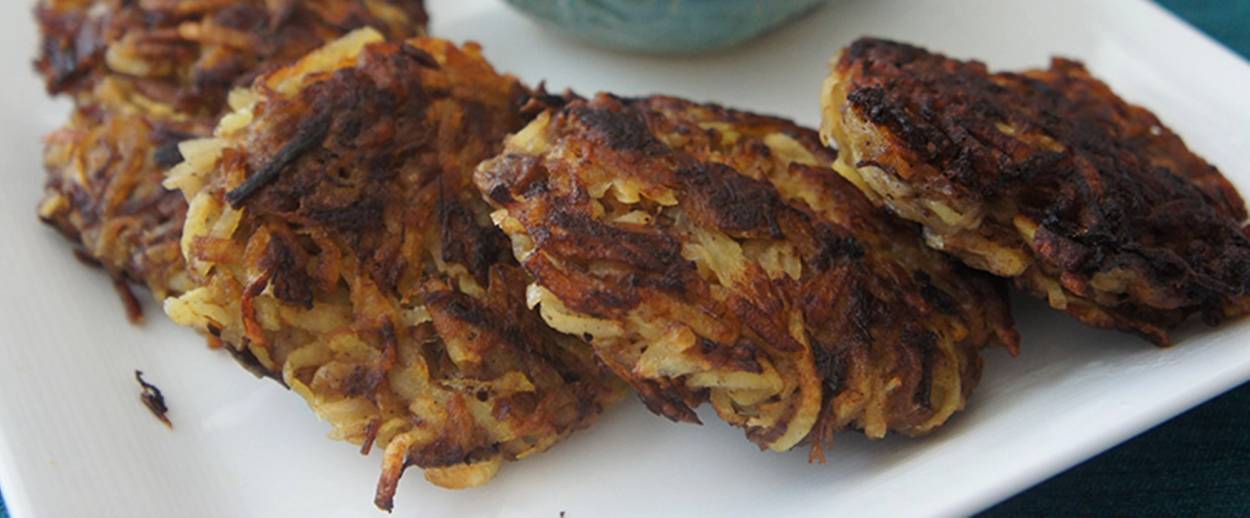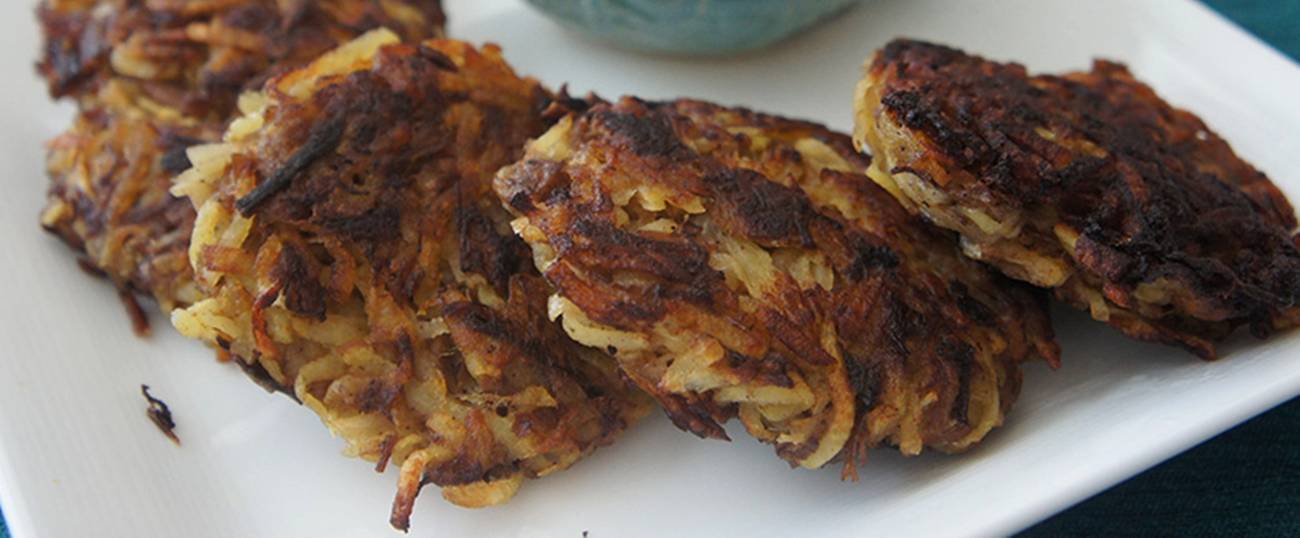You Love Latkes. You Love Brisket. For Hanukkah, Put Your Two Loves Together.
Make a moist brisket, then shred it and add it to your potato pancakes. It’s not what my grandmother used to make. It’s better.




Shortly after my mother passed away when I was 16, I decided I was going to start baking challah on Thursday nights with my 6-year-old sister. Even though my mother wasn’t Jewish and I had never seen her make challah, baking connected me to her—she had a passion for making bread and sweets—and helped keep my sadness at bay. For the first few years, I made a lot of bad challah. Burnt challah. Challah that had raw dough inside. But I just kept making it until it wasn’t bad. Until it was pretty good. Until I perfected my own recipe.
I had to do it on my own: I didn’t have time-tested family recipes for traditional Jewish fare. My family didn’t really have Jewish food traditions—at least, not very good ones. I am half-Jewish, and my one (much loved) Jewish grandmother might qualify for the world’s worst cook. I grew up thinking Jewish food was her rock-hard matzo balls and gelatinous gefilte fish from a jar. Even those who know and love my grandma know that a meal at her house results in only one thing: an upset stomach.
While my Jewish grandmother made leathery brisket and dried-out noodle kugel, my Italian mother had been known for her delicious eggplant parm, moist banana bread, and sinful tortellini alfredo with ham and peas. With my dual heritage, it was an easy choice between Jewish food and Italian food; I was comforted by meatballs, terrified by matzo balls. So, I grew up avoiding half my culinary heritage.
Without any able Jewish relatives to teach me, it became the job of my Jewish boyfriends and their mothers to be a much-needed source of culinary learning.
One could-have-been mother-in-law loathed me and operated out of constant fear that I would dupe her son into proposing to me. Yet it is the sweet dairy noodle kugel she once served at a Yom Kippur break-fast that I continue to make every year. It’s a recipe so many Americans know as a stand-by but was foreign to me: egg noodles, butter, sour cream, eggs, and a can of crushed pineapple. I wasn’t her choice for a future daughter-in-law, but at least I got some damn good recipes out of that rocky relationship.
From another now-ex-boyfriend, I learned to appreciate adventurous meats such as pickled tongue, chopped liver, and goose. The relationship didn’t turn out nearly as delicious as any of the dishes that we produced during our year together, but at least I can say I know how to cure a beef tongue and roast a goose.
Then I met my husband. We had a strong foodie bond from the very start, and our very first date was to the supermarket to shop for a Shabbat dinner that we cooked for friends. Through his never-ending love and encouragement, I was able grow culinary wings and let go of my fear of food failure. I also got a more traditional food education from his Big Fat Jewish family.
The first time I spent a Jewish holiday with them, the meals were so good that I overate and ended up on the couch with a stomachache. But unlike the stomachaches from my grandmother’s cooking, this was the stomachache every Jewish mother dreams of inflicting. There was perfectly seasoned chicken soup, a variety of egg-laden kugels, a standing rib roast, and chewy chocolate babka. I didn’t really understand how good traditional Jewish food could be until I was welcomed into their clan.
Now as I watch our 1-year-old daughter pat the challah dough with me early Friday mornings, I am filled with happiness to know she has not only an interest in the kitchen, but also a strong Jewish culinary foundation to which she will hopefully one day add and carry on.
I have gleaned recipes and techniques from diverse sources, making them my own and creating a new culinary tradition for my growing family. Still, it’s no surprise that with such a zig-zagging path to Jewish food expertise, my own style of Jewish cooking isn’t exactly traditional. I make challah with rosemary and roasted garlic; use my mother’s meatball technique to make fluffy matzo balls; and fill my hamantaschen with chocolate ganache, coconut cream, or peanut butter and jelly.
But there are also a few traditional Jewish recipes I actually learned from members of my family, including my dad’s recipe for perfectly fried latkes and my Uncle David’s famous brisket. My dad always made latkes at Hanukkah, and we always lit the menorah as a family (I only learned later that we were lighting the menorah in the wrong direction, in the school of Shammai rather than Hillel). But it was my dad’s joyous face as he fried up his simple latkes, served with applesauce and sour cream, that stands as one of my family’s few delicious Jewish food traditions. And when I was a teenager and I had the chance to taste Uncle David’s famous “Marry Me” brisket, the memories of my grandmother’s leathery brisket became a distant memory. Years later I asked for his recipe, and while I have made a few tweaks along the way, when I take that first bite I fondly remember the first time I tasted the moist meat and thought, “Wow, now this is Jewish food!”
Try my recipe for pulled brisket latkes, which combines these two recipes.
Shannon Sarna is editor of The Nosher and writes for other food ventures in the New York area. Follow her on Twitter @shasarna.